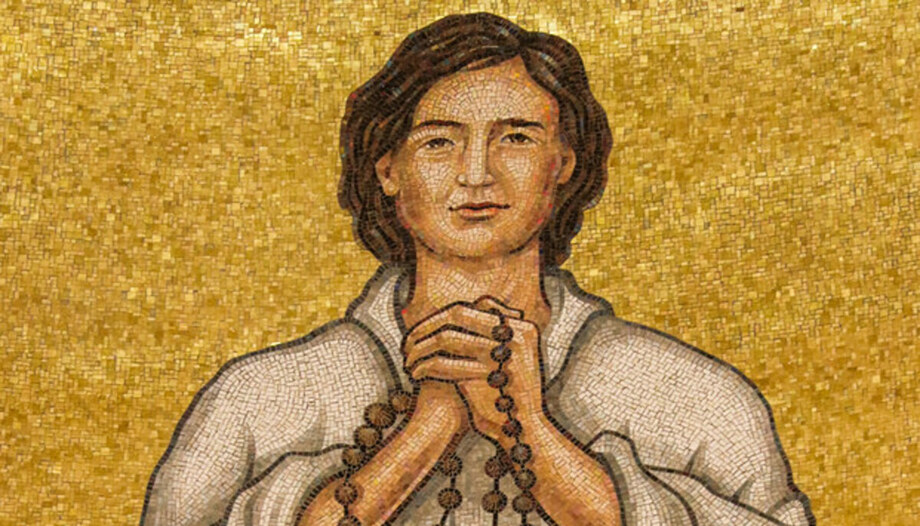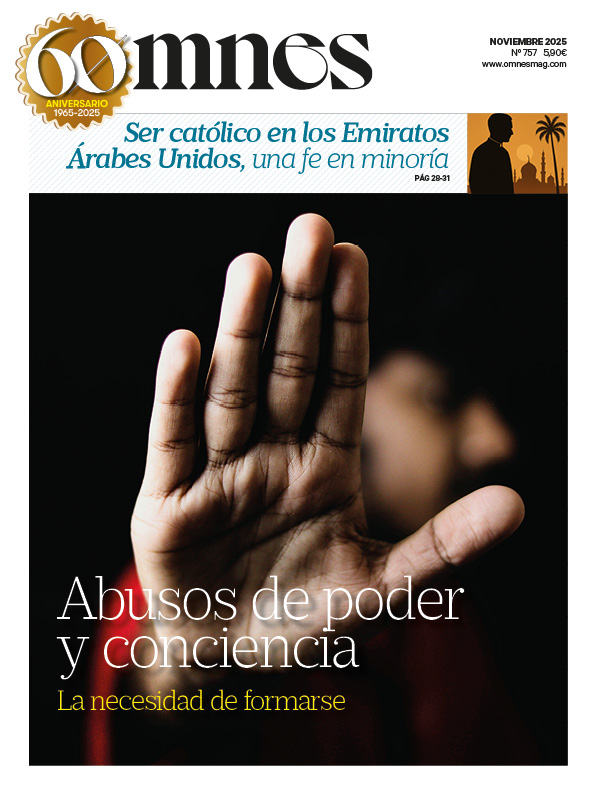San Lorenzo Ruiz was born in Binondo, a district of Manila (Philippines), to a Chinese father and a Tagalog mother, both Catholics, around 1600.
He studied as a child in a Dominican school, and was later notary of a convent of the same congregation. He married and had three children. In 1636, he embarked on an expedition to Japan and other parts of Asia with some Dominican missionaries. All of them were imprisoned when they arrived on the island of Okinawa, since in 1633 an edict had been promulgated ordering that all Christians be persecuted. This was not the first persecution of Christians in Japan; the same thing had happened in 1617 and 1632.
In 1637, St. Lawrence and his companions were tried in Nagasaki and demanded to apostatize in exchange for their lives. They were tortured and some Dominicans renounced the faith, while Lawrence and other companions remained steadfast. Finally, he was hanged on September 29, 1637.
His beatification is quite recent: Pope St. John Paul II beatified him in the Philippines in 1981, together with other missionary martyrs in Japan, and in 1987 he was canonized by the same Pope in the Vatican.
Although he died on September 29, his feast day is celebrated on the 28th.
The beatification
Among St. Lawrence's fellow martyrs were nine Japanese, four Spaniards, one Frenchman and one Italian. "These witnesses (...) had also sung psalms to the Lord of mercy and power, both while they were in prison and during their execution by hanging and the pit, which lasted three days," said St. John Paul II in the homily for the beatification of saint Lawrence and companions in Manila in 1981.
He also noted that Lorenzo Ruiz, "guided by the Holy Spirit to his unexpected goal after a fortunate journey, told the tribunal that he was a Christian, that he had to die for God and that he would give his life for Him a thousand times over". The Pontiff also quoted the textual words of St. Lawrence: "Even if this body had a thousand lives, I would let them all be taken from me if you force me to turn my back on Christ.
"It was at this moment that this young father of a family professed and brought to fullness the Christian catechesis he had received in the school of the Dominican friars of Binondo (...). This is the Christian essence of the first Blessed of the Philippine nation," the Pope continued. "Just as the young Church in Jerusalem produced its first martyr for Christ in the person of Deacon Stephen, so too the young Church in Manila, founded in 1579, produced its first martyr in the person of Lorenzo Ruiz, who had served in the parish church of St. Gabriel in Binondo. (...) The example of Lorenzo Ruiz, son of a Chinese father and a Tagalog mother, reminds us that everyone's life and one's whole life must be at Christ's disposal."
The martyred companions of St. Lawrence
St. John Paul II also wanted to remember the other martyrs who were being beatified that day: "The attractive figure of the first Filipino martyr would not be fully illustrated in its historical context without commending the witness given by his fifteen companions..."., who suffered martyrdom in 1633, 1634 and 1637. They form the group led by two men: Domingo Ibáñez de Erquicia, vicar provincial of the Japanese mission and native of Régil, in the Spanish diocese of San Sebastián; and Jacobo Kyu-hei Tomonaga, native of Kyudetsu, in the diocese of Nagasaki.
Both belonged to the Dominican Province of the Holy Rosary in the Philippines, founded in 1587 for the evangelization of the Far East. Lorenzo's group of companions consisted of nine priests, two professed brothers, two members of the Third Order, a catechist and a guide-interpreter. Nine were Japanese, four were Spanish, one French and one Italian (...) 'We have come to Japan only to preach faith in God and to teach salvation to the little ones and the innocent and the rest of the people'. This is how the martyr William Courtet summed up his mission before the judges in Nagasaki".
The Pope also noted the importance of Mary for these saints: "I entrust all this to Mary, who, with her rosary, helped our martyrs to imitate and proclaim her Son; to be fearless guardians of his word, like the courageous women Magdalene of Nagasaki and Marina of Omura. I entrust the destiny of the Philippines and all Asia to Mary, Queen of the Rosary, who under the title of 'La Naval' is venerated as the protector of the freedom of the Catholic faith."
Remembrance of the Spanish martyrs
In addition to greeting the representatives of France, Italy and Japan who attended the beatification, St. John Paul II also addressed a few words in Spanish to those present: "In this ceremony of the beatification of the first Filipino martyr and of the other fifteen brothers who gave their lives for the faith in Christ, I want to remember in their own language the four Spanish martyrs Domingo Ibáñez de Erquicia, Lucas Alonso, Antonio González and Miguel de Aozaraza.
It is a tribute that I gladly pay first of all to them, who, following in the footsteps of St. Francis Xavier and the teaching of their founder, St. Dominic of Guzman, spread the Christian faith in these lands and gave the supreme witness of fidelity to the Church.
At the same time, it is a fitting tribute of grateful remembrance to Spain, which for three and a half centuries carried out the evangelization of the Philippines, making it the only nation in the East with a large Catholic majority. I am happy to be able to proclaim this in the presence of the Extraordinary Spanish Mission that has come to attend the beatification and to whom, together with the other compatriots of the newly beatified gathered here, I address my cordial greetings and my pleased thoughts".








